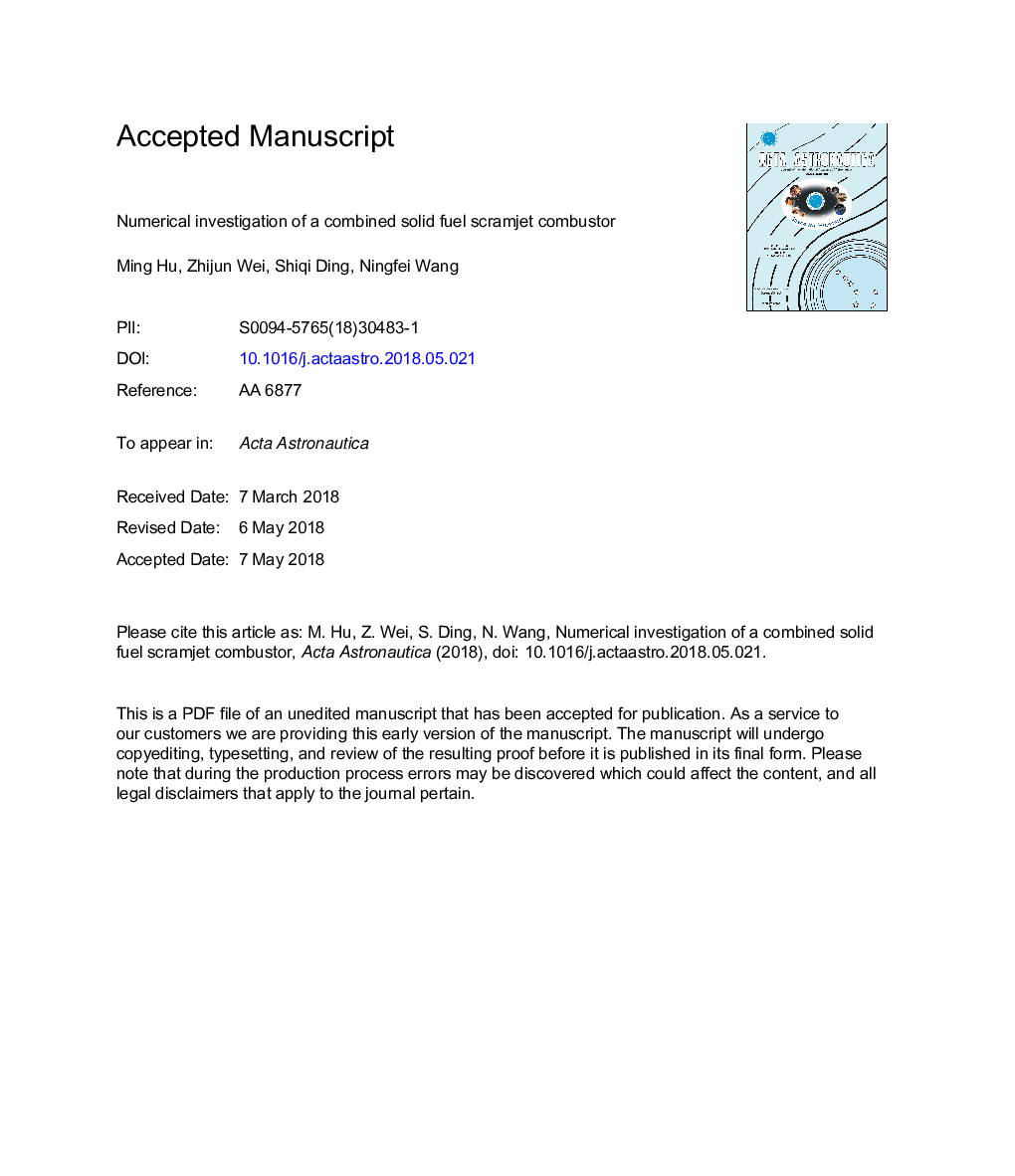| Article ID | Journal | Published Year | Pages | File Type |
|---|---|---|---|---|
| 8055501 | Acta Astronautica | 2018 | 27 Pages |
Abstract
A new scramjet configuration using solid fuel as propellant is proposed, namely, the combined solid fuel scramjet. The combined solid fuel scramjet combustor has been investigated numerically to predict its characteristics. Two-dimensional axisymmetric Reynolds-averaged Navier-Stokes equations and species transport equations are solved numerically. Turbulence closure is achieved using the shear stress transport k-Ï model. Three global one-step reaction mechanisms are used in this study. The experimental data in the published literature has been used to validate the accuracy of numerical model. The results of the numerical analysis show that secondary combustion occurs in the supersonic combustor. At the combustor outlet, the total pressure loss is about 0.65 and the combustion efficiency is about 48%. A subsonic recirculation zone is formed near the wall between the air inlet and the fuel-rich gas inlet, which is beneficial to mixing and flame holding. A normal shock wave is generated at the end of the expansion zone after the fuel-rich gas is injected into the combustor, and this is due to the strong pressure downstream induced by secondary combustion.
Keywords
Related Topics
Physical Sciences and Engineering
Engineering
Aerospace Engineering
Authors
Ming Hu, Zhijun Wei, Shiqi Ding, Ningfei Wang,
